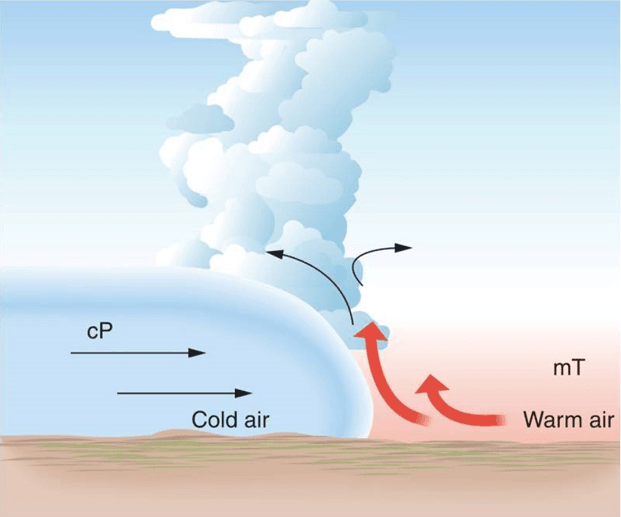
“An approaching cold front will cause temperatures to drop early next week” are probably words you’ve heard on the TV weather report at some point. But what is a weather front, and why are they important to skiing?
A weather front marks the boundary between two air masses. There are five major classifications of air masses: maritime tropical (mT, warm and wet), maritime polar (mP, cold and wet), continental tropical (cT, warm and dry), continental polar (cP, cold and dry), and continental arctic (cA, super cold, dry). These air masses move around the planet, pushed around by global wind patterns and storms.
When a front moves through a region, it marks the start of one air mass and the end of another. For example, a cold front marks the exit of a tropical air mass and the entrance of a polar air mass.
Aside from temperature, there are several characteristics of fronts that have a profound impact on skiing and weather in general. Since cold air is denser than warm air, a cold front will “wedge” under the warmer air, which causes it to rise, condense, and form precipitation when there is enough moisture. When a warm front moves in, it “overruns” on top of a colder air mass, which causes a similar but less dramatic precipitation effect as cold fronts.

It helps to think of the centers of air masses as huge mountains and fronts as valleys. Since the pressure and geopotential height of an air mass is usually at its center, the atmosphere’s lowest pressure and lowest height will be found at frontal boundaries. Due to the pressure gradient force and Coriolis effect, fronts usually have lower pressure (stormier weather) associated with them, especially cold fronts, since they force air up faster than warm fronts.
Explaining why low-pressure systems generate precipitation is complicated, and out of scope for this article, but essentially the convergence and divergence characteristics of the low and mid-level wind patterns trigger significant vertical forcing of air, which causes precipitation.
For skiing, colder temperatures are always preferred, so while a cold front will usually generate more precipitation with lighter, softer snowfall from the colder temperatures, don’t count out warm fronts to drop moderate snowfall over an extended period if temperatures allow!
